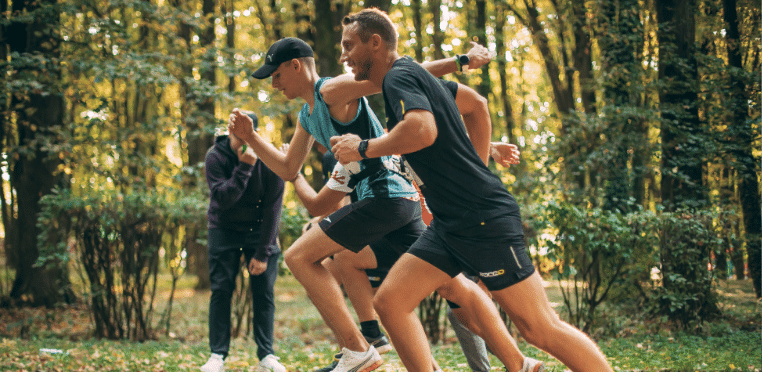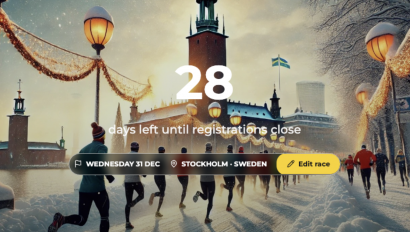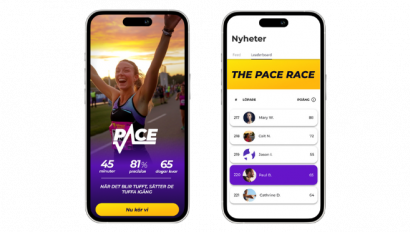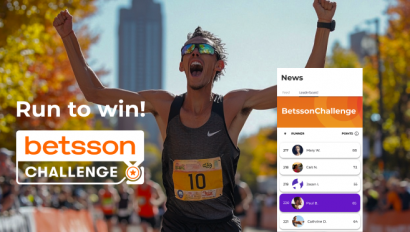The Future of Races: Race Timing & GPS Tracking

Nicklas Tingström is the CTO of RaceID and a self-proclaimed tech nerd. His vision for the future of technology in the endurance racing world is truly inspiring. We spoke with Nicklas about his technological projections both for organizers and participants – read on for the first part about race timing and GPS tracking below.
Nicklas, tell me a little bit about yourself and how you got into the tech industry?
I’ve always been into tech development, it sparked my interest when my older brother showed me how to use Amid 500 and Commodore 64 computers back in the day, probably when I was 8 years old. I took courses as a teenager and started with CSS, HTML and Flash coding when I was 15. As the times and tech changed, I learned new coding languages. Eventually, I started selling development instead of coding for myself. I realized I had an interest in, and a certain gift, for explaining the complexities of coding to non-developers. I started my own businesses and brought my friends on board to code for me.
How come you decided to start RaceID back in 2016?
I was approached by Erik and Johan (RaceID co-founders), to do a race calendar and registration system. They didn’t have the technical knowledge and needed to take advantage of someone who could code it and develop it for them for free…
It sounded like a project with potential, and I was intrigued to work in the “passion industry”. It’s something else when you get to help people enjoy their Number 1 passion in a better way. Especially compared to commodity or financial industries – which were what my previous projects were about. I also realized that the racing and endurance industry really had potential. So much is so poorly executed, and it still needs to go along its digitalization and consolidation journey that I think every market has to go through.

Wearables in health tech have recently become popular, with various smart watches and exercise-tracking devices. How do you think this will make a difference in the endurance racing world?
It’s already making a difference. When we started with RaceID, we had in our plans to develop a wearable for this Raceband project, but when the Apple Watch came out, we changed that to only a software project instead. With wearables and connectivity, there are big possibilities to really get everyone closer. I believe the endurance race industry as a whole is a very poor spectator sport and today we have a lot of the tools needed to bridge this gap.
I think wearables and especially 5G and 4G really enable this. You can bring people closer to each other by inventing new products. We are starting to see this in smartwatches and different tracking apps on the market. For next season at RaceID, we have having some really exciting projects that will go live which I really think can make a huge impact on how races are experienced on race day.
Today, endurance races are timed manually, semi-manually by apps or with RFID chip technology. What developments do you think will come in race timing in the next 5 to 10 years?
I am sure the next generation in timekeeping is going to be utilizing GPS technology. Instead of all the bulky RFID equipment that you need to carry into the forest and up mountains – setting it up with electricity cables and sometimes even separate networks, with GPS you can use software and administer the entire timing procedure around a race remotely if you like. It will also be much cheaper, as chip timing is often one of the biggest costs many race organizers are struggling with.
When using GPS timing, you can place geo-fenced zones using GPS coordinates that indicate the split times or checkpoints along your course. Then, as soon as someone enters the zone with their device, it records a time. The issue right now, is that many GPS devices only use single-band GPS technology. For the timing to work with high accuracy, we need dual- or even triple-band GPS signaling.
However, in a long endurance race, the milliseconds are not that important. So it’s probably enough accuracy to just get within a meter or within a second You can also combine methods, for example, using both GPS timing and complementing with App or RFID Timing for the most important timing points.
How accurate is GPS signaling today?
It depends on if it is single band or dual band, but generally, GPS is always accurate down to a meter. The problem is velocity. When you’re moving, the accuracy can worsen to about 10 m. So if you’re running next to someone, if you’re unlucky, it can look like a 20-m difference between those 2 people in the results.
That is not accurate enough right now, but it also depends on satellite coverage. If you can triangulate with three satellites and you have dual-band, it’s super accurate. Out in the woods though, if the coverage is not that great, I don’t think the smartwatches are able to connect to two different GPS networks and use them together yet. But in the future, when things open up and battery life gets longer and we can use different networks, things will change.
How do you think the improved GPS precision and GPS tracking can otherwise make a difference in endurance sports? How can GPS technology be used to help involve spectators for example?
The future possibilities of GPS are immense. We want to use it to make the endurance industry a more spectator-friendly sport.
Orienteering in Sweden for example is already doing this – the athletes carry a GPS device that makes it possible for spectators to accurately follow the overlay on a map online. Imagine that together with a network of cameras. As a spectator, you could get pinged that your friend is approaching a camera zone, and get your phone out to watch him or her run through, and maybe even interact with them and cheer them on!
And the same goes the other way around too. If you’re a runner, and you don’t want to miss your friends and family while they’re standing with a homemade poster ready to cheer, you could get a ping directly in your smartwatch as you get close.
It’s really cool. I mean, imagine the possibilities. You could have a big screen with everything going on in the finish line area, and maybe even people in the race would be willing to video call into that screen.
Another thing we haven’t talked about is the safety aspect of racing with GPS. I imagine it is easier to keep track of participants?
Yes definitely. Often when people wear RFID tags and they abandon the race, organizers worry about them and send out a team to search for the athlete in the woods, only to find out they are sitting at home on their sofa. So, confusion like that would be eliminated.
There are other safety aspects – for example, in our Raceband software, we will include an SOS button so that racers in distress can signal the organizer. They can then easily locate and assist the participant. This helps greatly and makes people feel secure out on the course, especially if it is a long mountain marathon.
I guess the only other thing stopping this now, is that everyone might not have a smartwatch or wearable to use as a tracking device during the race. How do you think we can solve that?
I think organizers will start using GPS tracking more and just hand out live devices, like with RFID chips, which are connected to the racer but only for that race. However, doing it this way, I feel you are missing out on everything a watch can do, referring to 2-way communication.
This connectivity and interactivity is made possible by GSM and having cloud computing somewhere that can handle all of this. For example, you can see how far ahead you are of the racer behind you or the one that’s just ahead of you. You can see that you’re two minutes behind or one minute ahead. Having access to this data in real-time would really help athletes perform better and find motivation, and I believe smartwatches will make it possible soon.
In development terms Samsung and Apple have got the hang of it, they have their app stores that allow companies to innovate with new apps. I think all brands need to get on board with using one of these two dominant operating systems, otherwise, you will be left in the dust, as you would say in our industry. So Garmin, as an example, really doesn’t have this connectivity and it’s impossible for us to make an app that Garmin users can enjoy.
Continue reading part two of this interview right here (coming soon!), where Nicklas talks about an exciting future in racing involving augmented reality.


